Who would have thought that making cheese could be so simple? Hardly any special ingredients or equipment are needed and it's just a bit of patience and a couple of hours in the kitchen before you start producing cheese that tastes as good as it looks.
Because I'm new to making cheese I decided to go down the kit route. This one's from http://www.bigcheesemakingkit.com/ is on sale at Harrods for £30 and has everything in it you need to make ten batches of cheese.

Photo by Rebecca Williams
You can make soft and creamy or firm and crumbly goat's cheese. Here's my attempt at the soft and creamy.
Inside the box there's a thermometer, a large muslin square, a packet of citric acid and a packet of organic sea salt and the all-important instructions. You don't need any special pot to make it in, just a large lidded saucepan, a colander and 4 pints of full-fat goat's milk.
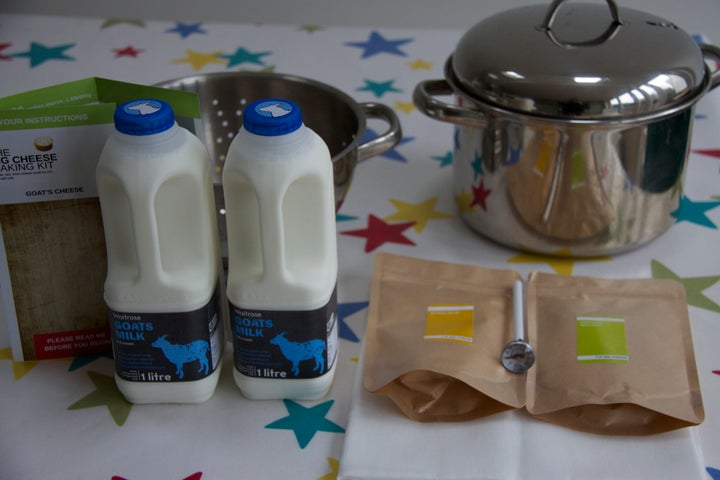
Photo by Rebecca Williams
Start by attaching the clip-on thermometer to your pan. I have a digital thermometer so used that instead - the clip was not deep or wide enough for the lipped saucepan I had.
Mix 1 tsp of the citric acid into 50ml of cooled, boiled water, stir and allow to dissolve.
Pour the milk into the pan and stir the cooled citric acid mix into the milk in an up and down motion.
Heat the milk on a medium heat to 180F and stir regularly to prevent burning. When the milk reaches 180F remove from the heat.
Cover with the pan lid and allow to sit, off the heat, undisturbed.
Line the colander with the muslin and gently pour the curds in to drain the whey. Don't expect your curds to look like cottage cheese, they won't. The milk looks like this when it's ready to be drained.
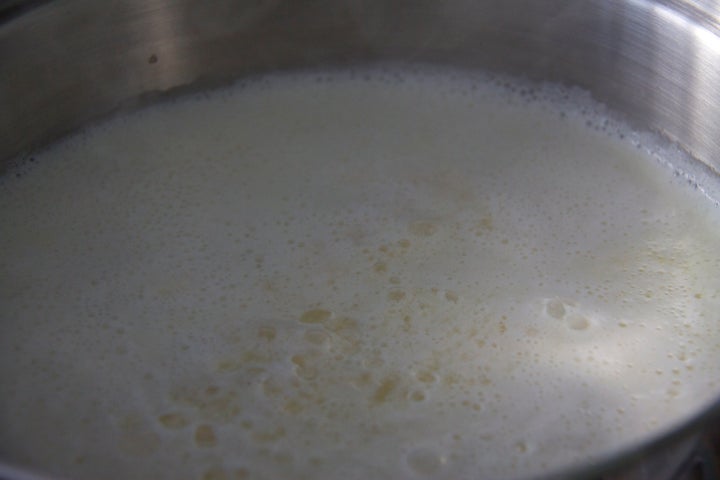
Photo by Rebecca Williams
This is where the patience comes in, let it drain through the muslin, this could take up to an hour.
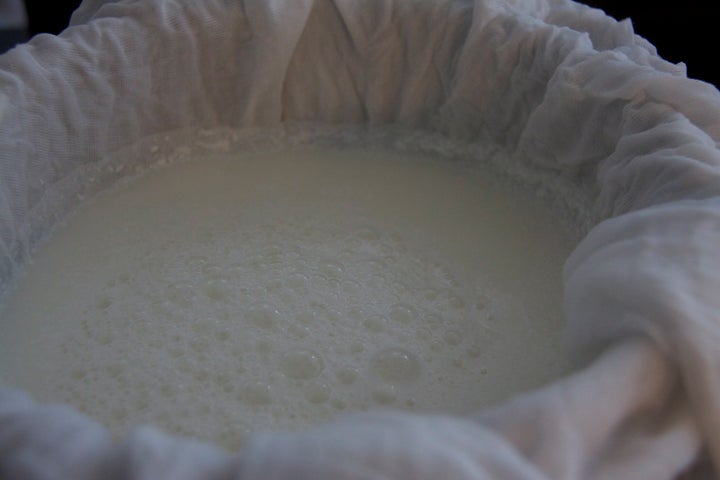
Photo by Rebecca Williams
Once the majority of the whey has drained, sprinkle in the salt and mix gently. If you'd like to add herbs, it's now.
Gather up the edges of the muslin to create a bag. Twist it, give a gentle squeeze to remove the whey (don't squeeze too hard or you'll lose your cheese).
Put a wooden spoon through the bag knot and hang over a bowl for the rest of the whey to drain - this will take around 30 minutes to an hour. If you can't manage that, I weighted mine with a vase full of water and it did the trick.
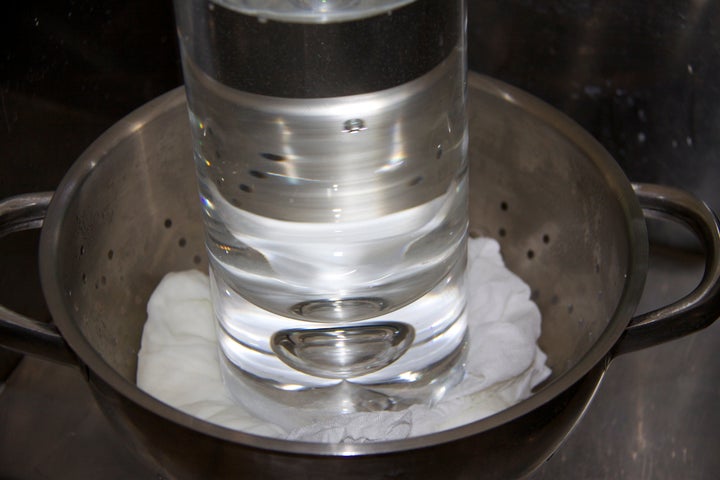
Photo by Rebecca Williams
Once the cheese is drained it can be shaped into balls or logs or transferred into a dish or shaped using a ramekin.
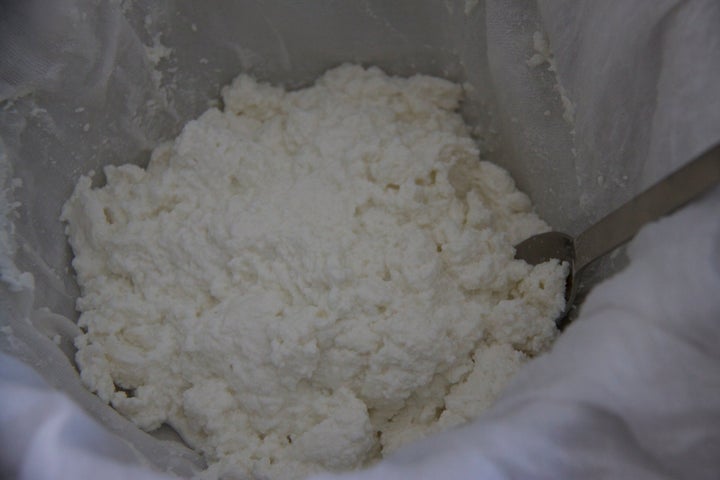
Photo by Rebecca Williams
It can be eaten immediately or put in a fridge to firm up. Cover and store in the fridge for up to a week.
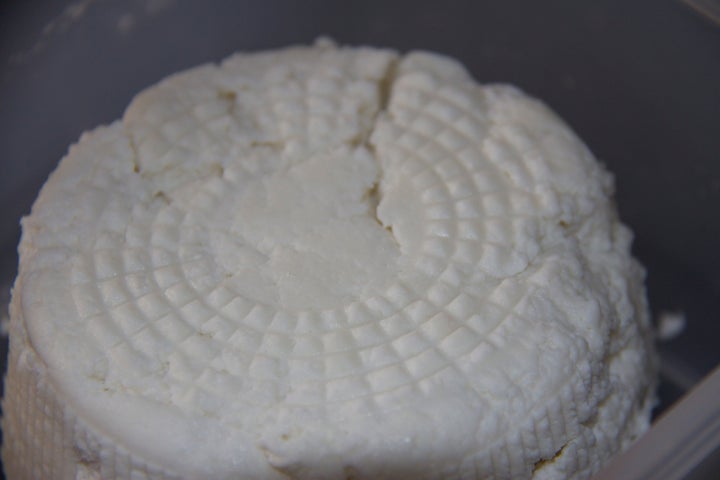
Photo by Rebecca Williams
Here's the result of my second attempt, which I'm sure you'll agree looks pretty professional and a great centre piece to any cheese board.
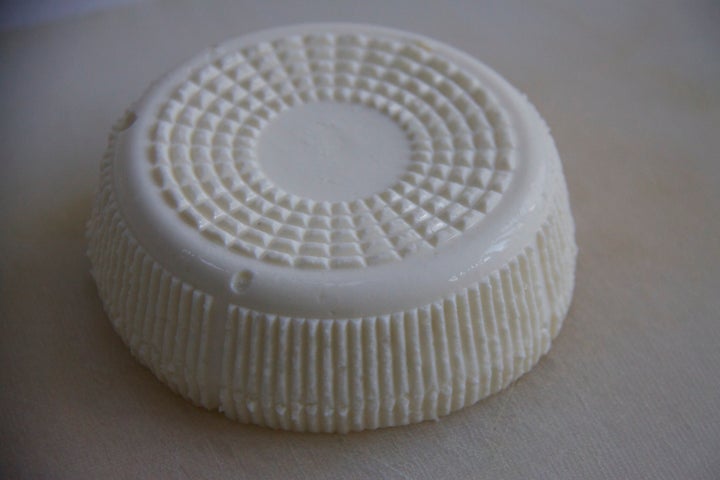
Photo by Rebecca Williams
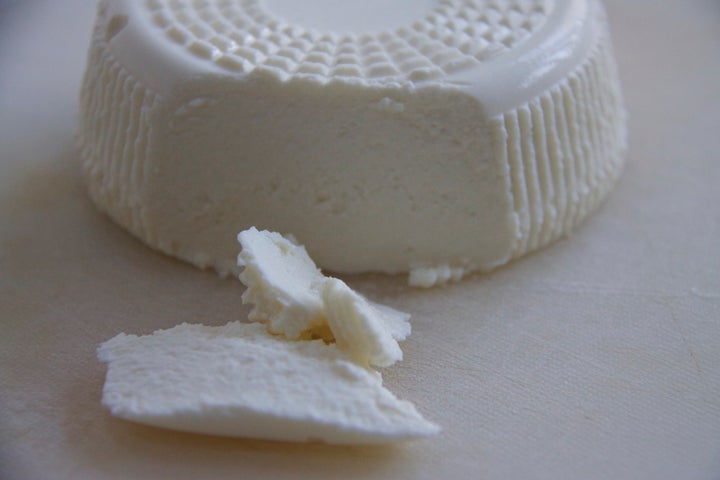
Photo by Rebecca Williams
Photo by Rebecca Williams
There's also a pretty good selection of cheese making accessories at Lakelandhttp://www.lakeland.co.uk/info/homemade-cheese-guide-step-by-step. You can make everything you normally buy on a regular basis, although there aren't the usual preservatives and additives so won't last that long.
For those who can't eat dairy, there are recipes on the web for vegan cheese, the main ingredient is cashew nuts, so the possibilities are endless.
I'm keen to hear your thoughts on making your own cheese, please do let me know.